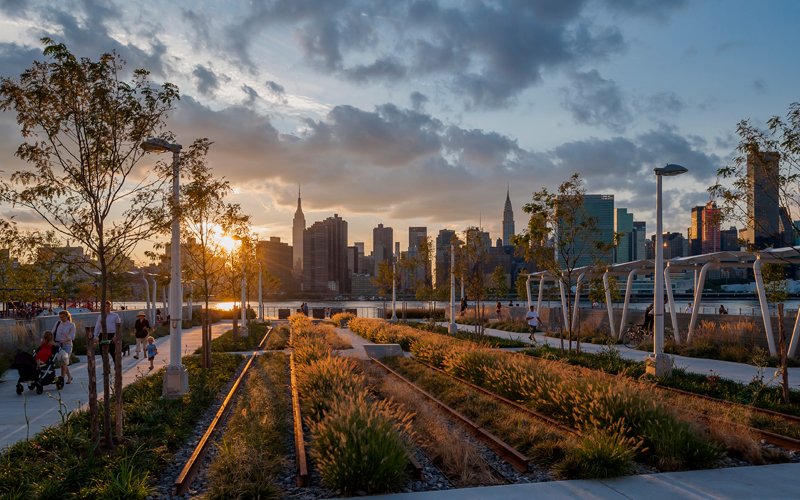
Striking a Balance: Navigating the Interplay Between Urban Development and Climate Change”

In the complex dance between urban development and climate change, finding the right balance is imperative for a sustainable future. Rapid urbanization has brought undeniable benefits, including economic growth and improved living standards. However, the environmental toll of unchecked development raises critical concerns. In this blog, we will explore the key issues that arise at the intersection of urban development and climate change and discuss potential solutions to create cities that thrive without compromising the health of our planet.
Amid these challenges, numerous non-profit organizations are tirelessly working to address the environmental impact of urban development. These organizations operate on the frontlines of change, offering innovative solutions and advocating for sustainable practices. From promoting renewable energy and green infrastructure to fostering community engagement and influencing policy, these non-profits play a pivotal role in shaping a more sustainable urban future. Their collective efforts underscore the importance of collaboration between communities, governments, businesses, and advocacy groups to build resilient, eco-friendly cities for generations to come.
-
- Urban Heat Islands:
One of the foremost challenges in urban development is the creation of heat islands. As cities expand, they replace natural landscapes with concrete and asphalt, absorbing and re-radiating solar heat. This phenomenon exacerbates local temperatures, leading to heat-related health issues and increased energy consumption for cooling. Sustainable urban planning must prioritize green spaces, reflective surfaces, and efficient building design to mitigate the urban heat island effect.
-
- Non-Profit Spotlight: Cool Roof Rating Council (CRRC)
The Cool Roof Rating Council is a non-profit organization dedicated to promoting the use of cool roofing materials. By providing a credible rating system for the reflectance and emittance of roofing products, CRRC contributes to the reduction of urban heat islands, fostering cooler and more sustainable urban environments.
-
- Transportation Emissions:
The reliance on fossil fuels for transportation contributes significantly to greenhouse gas emissions in urban areas. As cities grow, so does the demand for efficient and sustainable transit options. Investing in public transportation, promoting cycling, and adopting electric vehicles are crucial steps toward reducing the carbon footprint associated with urban mobility. Smart city planning should prioritize connectivity and accessibility while minimizing the environmental impact of transportation.
-
- Non-Profit Spotlight: Transportation for America
Transportation for America is a non-profit organization dedicated to advocating for a transportation system that is safer, cleaner, and more equitable. They work towards reducing transportation emissions by promoting sustainable and efficient transit solutions, advocating for smart transportation policies, and encouraging investment in accessible and low-emission transportation infrastructure.
-
- Loss of Biodiversity:
Expanding urban landscapes often encroach upon natural habitats, leading to the loss of biodiversity. This not only disrupts ecosystems but also weakens the resilience of cities to climate change. Urban development should embrace green infrastructure, incorporating parks, green roofs, and wildlife corridors to support biodiversity. This not only enhances the quality of life for urban residents but also contributes to the overall health of the planet.
-
- Non-Profit Spotlight: The Nature Conservancy
The Nature Conservancy is a global organization dedicated to conserving the lands and waters on which all life depends. With a focus on protecting biodiversity, they work to create innovative and science-based solutions for the challenges posed by urban development. Their initiatives often involve preserving critical habitats and promoting sustainable urban planning practices.
-
- Water Management Challenges:
Urbanization can strain water resources through increased demand and altered hydrological patterns. Unplanned development may lead to issues such as flooding, water scarcity, and contamination. Sustainable water management practices, including rainwater harvesting, green infrastructure, and efficient wastewater treatment, are vital for building climate-resilient cities that can adapt to changing precipitation patterns and ensure water security.
-
- Non-Profit Spotlight: Water.org
Water.org is a non-profit organization that addresses water management challenges by providing access to safe water and sanitation. In the context of urban development, their initiatives support sustainable water management practices, efficient water use, and community-based solutions to ensure water security in rapidly growing urban areas.
-
- Waste Generation and Management:
The rapid pace of urban development often results in increased waste production, contributing to pollution and environmental degradation. Cities must prioritize waste reduction, recycling programs, and sustainable waste management practices. Circular economy principles can be integrated into urban planning to minimize waste and promote the reuse of materials, fostering a more sustainable and resilient urban ecosystem.
-
- Non-Profit Spotlight: WasteAid
WasteAid works towards promoting sustainable waste management practices globally. Their focus is on areas where waste management infrastructure is lacking. By providing communities with the tools and knowledge to manage waste effectively, WasteAid contributes to reducing pollution and the environmental impact of waste in urban areas.
-
- Building Decarbonization:
A critical aspect of sustainable urban development is the decarbonization of buildings, which account for a significant portion of greenhouse gas emissions. Energy-efficient construction, retrofitting existing structures, and incorporating renewable energy sources are pivotal in reducing the carbon footprint of urban areas. Initiatives such as the electrification of heating systems and the promotion of energy-efficient appliances play a crucial role in this endeavor.
-
- Non-Profit Spotlight: Architecture 2030
Architecture 2030 is a non-profit organization committed to transforming the built environment from a major contributor of greenhouse gas emissions to a central part of the solution to the climate crisis. By providing research, educational resources, and a framework for sustainable building practices, Architecture 2030 empowers architects, planners, and policymakers to make informed decisions that contribute to a carbon-neutral future.
In each of the preceding sections, non-profit organizations play a crucial role in addressing the challenges posed by urban development and climate change. Whether it’s promoting sustainable transportation, biodiversity conservation, water management, waste reduction, or building decarbonization, these organizations contribute valuable expertise, advocacy, and community engagement to drive positive change. Collaborative efforts between governments, businesses, and non-profits are essential to creating resilient, sustainable, and climate-friendly urban environments for future generations.